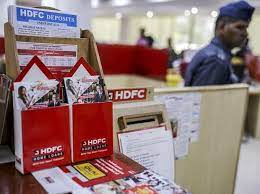29 Mar , 2024 By : Debdeep Gupta

HDFC Bank, India's largest private sector lender, has increased its repo rate-linked home loan interest rates gradually since January this year.
The rates were increased even though the Reserve Bank of India has kept the repo rate unchanged since April last year. As the name suggests, repo rate-linked home loan rates should move in tandem with changes in the repo rate.
The increases (see graphic) apply only to newly sanctioned loans and not existing ones, which means older borrowers will not be affected.
The lowest interest rate on a Rs 50 lakh home loan was 8.35 percent in January, whereas at present, the lowest rate is 8.70 percent. So, in three months, HDFC Bank has effectively increased home loan rates by 35 basis points (bps). One basis point is one-hundredth of a percentage point.
All retail loans sanctioned after October 1, 2019, are linked to an external benchmark, which, in the case of most banks, is the repo rate. Non-banking financial companies like HDFC, which was merged with HDFC Bank in July last year, however, do not have to adhere to the external benchmark regime.
Factors leading to increase in home loan rates
“HDFC Ltd was selling home loans aggressively at about the 8.30 percent to 8.45 percent range just a few months before the merger with HDFC Bank. Post-merger, HDFC Bank has been increasing the rates at the portfolio level, citing a rise in the cost of funds,” said Vipul Patel, founder of MortgageWorld, a loan consulting firm.
Raj Khosla, MD of MyMoneyMantra.com, attributed this to liquidity issues, which have affected not only HDFC Bank but others as well.
According to data on interest rates compiled by Paisabazaar, Axis Bank and Karur Vysya Bank have also increased their effective new home loan rates by 5 bps this year. In January, the lowest home loan rates at Axis Bank and Karur Vysya Bank for a Rs 50 lakh loan were 8.70 percent and 8.95 percent, respectively. From March, these rates went up to 8.75 percent at Axis Bank and 9 percent at Karur Vysya Bank.
Nationalised lenders such as State Bank of India, Bank of Baroda, and Bank of India, however, have not increased their rates.
Change in spread to blame?
Home loan experts told Moneycontrol the hike in interest rates at HDFC Bank could be due to the change in spreads.
A repo rate-linked lending rate is made up of three components: the repo rate, the operating cost spread, and the credit risk premium. Of these, once the home loan contract is signed, the operating cost spread can be reset only once in three years. However, the spread can be revised for new borrowers.
“This spread includes mainly the cost of funds, cost of overheads, margin for revenue generation/business (profitability),” Patel explained. He added that these may vary from bank to bank and are generally decided by the asset-liability committee.
Who gets impacted?
It is been reported that HDFC Bank’s new repo-linked interest rate applies to new home loans. So, transferring an existing loan from another bank to HDFC Bank or applying for a new home loan now will attract higher rates, as per the existing spread.
“The spread added by the bank on a repo rate in a home loan interest rate usually remains fixed for the term of the loan or until specified otherwise in your loan agreement,” said Adhil Shetty, CEO of BankBazaar.com. As per the RBI’s external benchmark guidelines, banks can alter the operational cost spread over the repo rate (or any other external benchmark selected by the bank) only once in three years.
So, the widening of the spread will not affect the home loans of existing borrowers unless their credit scores have fallen significantly.
What’s the impact on a new home loan borrower?
Let’s assume borrower A had taken a home loan of Rs 50 lakh for 25 years (300 months) from HDFC Bank in January when the rate was 8.35 percent. The overall interest payable would be Rs 69.27 lakh (refer to graphic).
But when a new home loan borrower – B - applies for a Rs 50 lakh home loan with the same tenure now, the bank will offer the loan at a higher rate of 8.75 percent. The overall interest payable will be Rs 73.32 lakh during the tenure of 25 years.
Opting for a longer tenure - 29 years - to avoid paying higher EMIs will take the total interest payable to Rs 86.21 lakh (see table).
What new home loan borrowers should do?
“New home loan borrowers should scout for banks offering loans with the narrowest possible spread,” said Shetty. This will reduce the interest payable.
Once the loan repayments start, always look to make part-prepayments with surplus funds. Also, annual bonuses or regular savings surpluses can be used to repay the loan faster and reduce the interest outgo if you have a home loan with HDFC Bank at these rates.
0 Comment